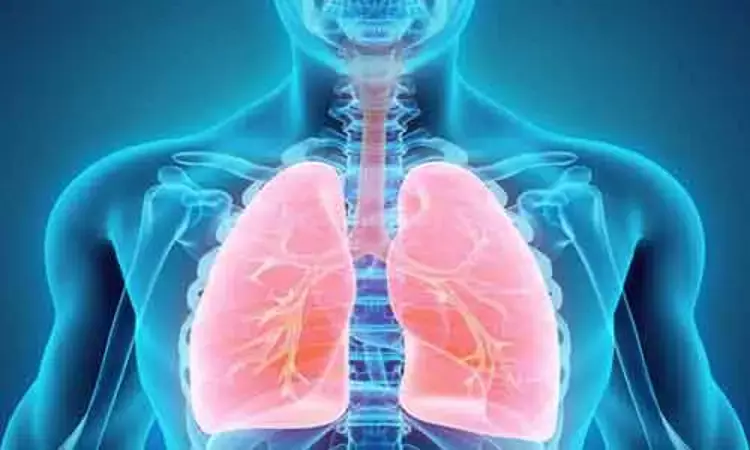- Home
- Medical news & Guidelines
- Anesthesiology
- Cardiology and CTVS
- Critical Care
- Dentistry
- Dermatology
- Diabetes and Endocrinology
- ENT
- Gastroenterology
- Medicine
- Nephrology
- Neurology
- Obstretics-Gynaecology
- Oncology
- Ophthalmology
- Orthopaedics
- Pediatrics-Neonatology
- Psychiatry
- Pulmonology
- Radiology
- Surgery
- Urology
- Laboratory Medicine
- Diet
- Nursing
- Paramedical
- Physiotherapy
- Health news
- Fact Check
- Bone Health Fact Check
- Brain Health Fact Check
- Cancer Related Fact Check
- Child Care Fact Check
- Dental and oral health fact check
- Diabetes and metabolic health fact check
- Diet and Nutrition Fact Check
- Eye and ENT Care Fact Check
- Fitness fact check
- Gut health fact check
- Heart health fact check
- Kidney health fact check
- Medical education fact check
- Men's health fact check
- Respiratory fact check
- Skin and hair care fact check
- Vaccine and Immunization fact check
- Women's health fact check
- AYUSH
- State News
- Andaman and Nicobar Islands
- Andhra Pradesh
- Arunachal Pradesh
- Assam
- Bihar
- Chandigarh
- Chattisgarh
- Dadra and Nagar Haveli
- Daman and Diu
- Delhi
- Goa
- Gujarat
- Haryana
- Himachal Pradesh
- Jammu & Kashmir
- Jharkhand
- Karnataka
- Kerala
- Ladakh
- Lakshadweep
- Madhya Pradesh
- Maharashtra
- Manipur
- Meghalaya
- Mizoram
- Nagaland
- Odisha
- Puducherry
- Punjab
- Rajasthan
- Sikkim
- Tamil Nadu
- Telangana
- Tripura
- Uttar Pradesh
- Uttrakhand
- West Bengal
- Medical Education
- Industry
Neutrophils to lymphocytes and platelets ratio accurately predicts mortality in patients with ARDS

China: Neutrophils to lymphocytes and platelets ratio (N/LPR)- is a more accurate predictor of mortality rate in acute respiratory distress syndrome (ARDS) patients than neutrophil-to-lymphocyte ratio (NLR), a recent study has found. The study was published in the journal BMC Pulmonary Medicine on 15 August 2022.
Acute respiratory distress syndrome is a fatal respiratory failure disease that occurs often in critically ill patients. ARDS is associated with coagulation abnormalities and immune dysregulation, considering this, it becomes necessary to identify a predictor for accurate prediction of ARDS mortality based on its pathophysiology. '
Against the above background, Nian Wang, Chongqing Medical University, Chongqing, China, and colleagues aimed to evaluate the clinical value of neutrophils to lymphocytes and platelets ratio for predicting 28-day mortality in patients with ARDS.
For this purpose, the researchers retrospectively reviewed the medical records of ARDS patients from July 2018 to October 2021. Collection of lymphocyte count, neutrophil count, and platelet count was done, and N/LPR and NLR were calculated. The optimal cut-off values for 28-day mortality in ARDS were evaluated using the receiver operating characteristic (ROC) curve.
The researchers included a total of 136 ARDS patients and were divided further into survivors (n = 69) and non-survivors (n = 67) groups in accordance with their survival status on day 28.
Based on the study, the researchers found the following:
- There were no significant differences between the two groups in age, sex, history of smoking and drinking, comorbidities, and reasons of admission.
- Non-survivors had significantly higher neutrophil counts, NLR and N/LPR and had significantly lower platelet counts than survivors.
- N/LPR, NLR and platelet counts were independent predictors for 28-day mortality in ARDS.
- N/LPR with optimal cut-off value of 10.57 (sensitivity: 74.6%; specificity: 72.5%) is a more reliable predictor for 28-day mortality in ARDS than NLR and platelet count (AUC: 0.785 vs. 0.679 vs. 0.326).
- Subgroup analysis confirmed that ARDS patients with N/LPR < 10.57 had significantly lower 28-day mortality than patients with N/LPR ≥ 10.57.
- Kaplan–Meier analysis also confirmed that ARDS patients with N/LPR < 10.57 had significantly longer survival.
"N/LPR is an independent risk factor associated with 28-day mortality in ARDS patients and in addition, showed better performance in predicting mortality rate than NLR," the researchers wrote.
"N/LPR therefore, in clinical practice, should be considered as one of the routine indicators for monitoring and reporting the health status of ARDS patients which can provide judgment reference for physicians," they conclude.
Reference:
Nie, S., Wang, H., Liu, Q. et al. Prognostic value of neutrophils to lymphocytes and platelets ratio for 28-day mortality in patients with acute respiratory distress syndrome: a retrospective study. BMC Pulm Med 22, 314 (2022). https://doi.org/10.1186/s12890-022-02112-w
Dr Kamal Kant Kohli-MBBS, DTCD- a chest specialist with more than 30 years of practice and a flair for writing clinical articles, Dr Kamal Kant Kohli joined Medical Dialogues as a Chief Editor of Medical News. Besides writing articles, as an editor, he proofreads and verifies all the medical content published on Medical Dialogues including those coming from journals, studies,medical conferences,guidelines etc. Email: drkohli@medicaldialogues.in. Contact no. 011-43720751


